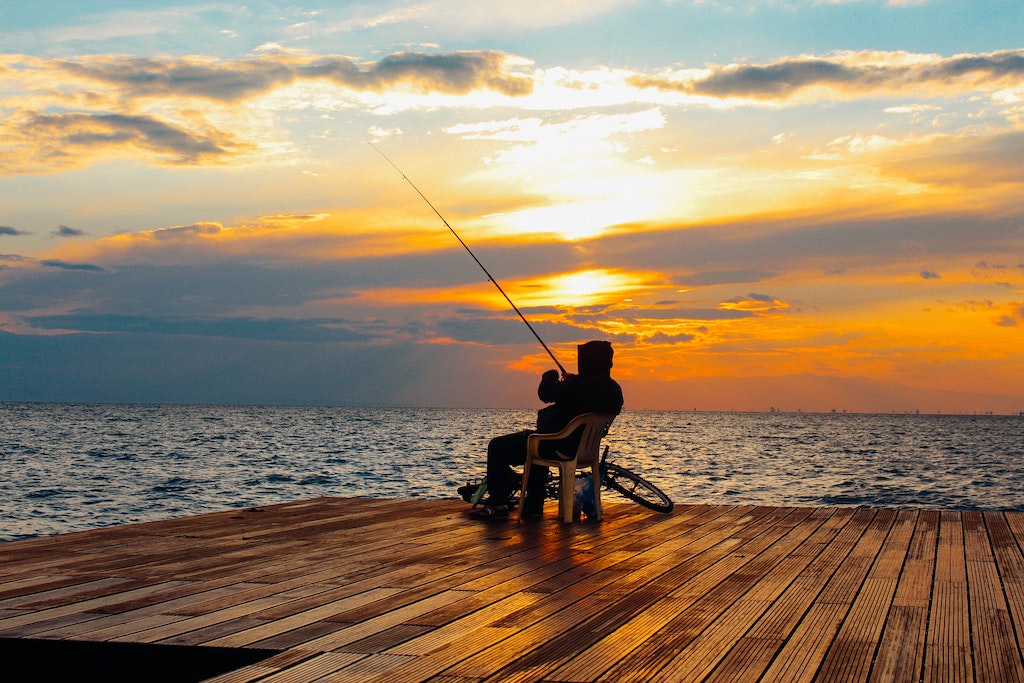So you have all your gear ready for your next fishing trip. Now you just gotta shove off, have your line in the water, and play the waiting game. Maybe you enjoy the waiting game of getting fish to bite; but you can expedite the process by choosing the appropriate freshwater fishing baits for what species you intend to catch. Here is a simple guide to bait options for your next freshwater fishing trip.
Before you do anything, remember to check your local fishing regulations to ensure that the bait you intend to use is legal in the area you choose to fish.
You can save a lot of money by using natural fishing baits, especially if you can find and collect them yourself.
-
Cut Fish Bait
For: Catfish and carp.
These fishes are more attracted to scent. You can use any caught, scaled, and preferably skin-on fish, slice them up, and use them as bait. Cut long, v-shaped strips using the belly area to make them look like a fish or eel. -
Leeches
For: walleye and northern pike.
Leeches serve as very effective live bait. They should be hooked through the sucker in the tail, and remember–don’t fish them faster than they can naturally swim. They are readily available in many bait shops, and last for days in the refrigerator. And before you use them, and if you put them in your live well, give them an hour to adjust to the temperature and stretch out. -
Dough Balls
For: Trout, pan fish, catfish, carp, etc.These are commercially made, and usually have labels for specific fish. Take it out of the can and mold it all the way around the hook and barb. You can also make your own dough balls, but keep in the mind that carp will bite almost anything–so consider just using leftovers as bait, as well. Here’s a dough ball recipe below.
Recipe: Mix 1 cup flour, 1 cup cornmeal, 1 teaspoon sugar in a bowl. Take a 1 quart container of water and pour just enough of it into the mixture to make a heavy dough. Roll the dough into balls about 1/2-inch to 1-inch in diameter. Mix the rest of the water with 1 cup of molasses and pour it into a pan. Add a flavoring agent, such as garlic, licorice, anise, or strawberry gelatin. Put the pan on the stove and bring the molasses, water, and flavoring to a boil. When the mixture is boiling, drop in the dough balls, but don’t overcrowd them. Cook for 2-3 minutes and cool before using. -
Grubs and Meal Worms
For: pan fish, sunfish, trout.
These are a popular choice for live fishing bait, and can be easily found from fishing shops. Use them one by one or in multiples. They are also easy to find if you harvest them from soil, leaves, plants, and vegetables. -
Minnows
For: Bass, pike, etc.
These are a good all-purpose fishing bait, and can in different sizes. Use larger ones for bass and pike, but they can be used for pretty much any fish you intend to catch. Store them together and make sure they are not overcrowded in the bucket. Use the same water they were captured or bought in. -
Insects
For: pan fish, sunfish, trout.
Insects such as ants, beetles, grasshoppers, crickets, and caterpillars serve as very good bait for species such as brown trout, smallmouths, and large trout. You can buy them or capture insects on your own with a net. -
Clams and Mussels
For: any native fish.
If these are native to your area, they are great to catch any of the native fish. Gather them before and during your trip, cut out the clam or mussel, and let the bait harden a bit so it stays on the hook. Use thread to tie it on if they won’t stay, but don’t pull too tight. -
Crayfish
For: smallmouth bass, pan fish, catfish, bullheads, carp.
For certain species, you need to either use whole, live crayfish, only the tail or pincer meat, or dead crawdads. They can be either bought or caught using a window screen or mesh net in the water. Store them in wet rags, damp moss, or a bucket. -
Freshwater Worms
For: nearly all freshwater fishing.
For walleyes and bass, earthworms and night crawlers are best. For pan fish, sunfish, and trout, use smaller manure worms. You can easily find worms by using a shovel in some shaded, damp dirt.

